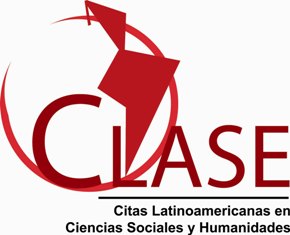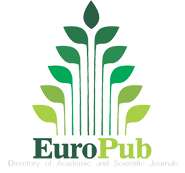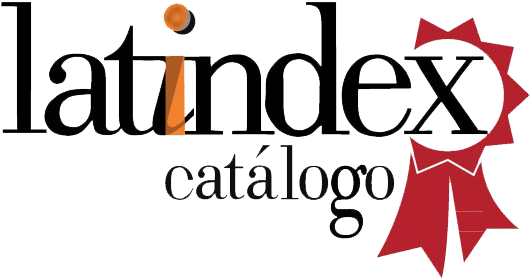Evaluation of Trichoderma sp. sporulation under different fermentation times and liquid media (Original)
Keywords:
Trichoderma; fermentation; liquid substrate, rice, oatsAbstract
The genus of filamentous fungi Trichoderma has garnered increasing interest in the agricultural field due to its potential as both a biological control agent and a plant growth promoter. This interest arises from the need to find alternatives to combat fungal diseases without compromising human health or the environment. The implementation of Trichoderma spp. as a biological control tool has opened new perspectives in organic agriculture, notably for its ability to promote sustainable farming practices and reduce dependence on chemical pesticides, thereby minimizing the environmental impacts of their use. This research aimed to evaluate the sporulation of Trichoderma sp. over different periods and in various culture media. Substrates such as whole rice grains and oatmeal flakes were used at different fermentation times. The results indicated that the treatments of Oatmeal + Dextrose for 22 days and Rice + Dextrose for 10 days of fermentation achieved the best results in conidia production. This promising approach can significantly contribute to sustainable agriculture and environmental well-being.
Downloads
References
Andrade, P., Luna, A., Osorio, E., Molina, E., Landero, N., & Barrales, H. J. (2019). Antagonismo de Trichoderma spp. vs hongos asociados a la marchitez de chile. Revista Mexicana de Ciencias Agrícolas, 10(6), 1259-1272. https://www.scielo.org.mx/scielo.php?pid=S2007-09342019000601259&script=sci_arttext
Andrade, P., Rivera, M. N., Landero, N., Silva, H. V., Martínez, S. J., & Romero, O. (2023). Beneficios ecológicos y biológicos del hongo cosmopolita Trichoderma spp. en la agricultura: Una perspectiva en el campo mexicano. Revista Argentina de Microbiología, 55(4) 366-377. https://www.sciencedirect.com/science/article/pii/S0325754123000603
Antomarchi, Y., Tamayo, E., Guerra, J. L., Mas, S. M., & Barrera, A. L. (2023). Producción de hongo Trichoderma Harzianum A-34 en sustratos sólidos alternativos. Revista Científica Arbitrada Multidisciplinaria Pentaciencias, 5(1), 259-267. http://editorialalema.org/index.php/pentaciencias/article/view/440
Bhanu, G., Padmaja, V., & Siva Kiran, R. (2008). Statistical optimization of process variables for the large-scale production of Metarhizium anisopliae. Bioresource Technology, 99(6), 1530-1537. https://doi.org/10.1016/j.biortech.2007.04.031
Companioni, G. B., Domínguez, A. G., & García, V. R. (2019). Trichoderma: su potencial en el desarrollo sostenible de la agricultura. Biotecnología Vegetal, 19(4), 237-248. http://scielo.sld.cu/scielo.php?pid=S2074-86472019000400237&script=sci_arttext
Chávez, M., Montaña, J. S., Martínez, M. M., Mercado, M., Rodríguez, M. X., & Quevedo, B. (2008). Efecto del sustrato y la exposición a la luz en la producción de una cepa de Trichoderma sp. Universitas Scientiarum, 13(3), 245-251. http://www.scielo.org.co/scielo.php?pid=S0122-74832008000300003&script=sci_arttext
Chen, H. (2013). Biotechnology Principles of Solid-State Fermentation. Springer, Dordrecht. https://doi.org/10.1007/978-94-007-6043-1_2
Cruz, C. I., Zelaya, L. X., Sandoval, C. G., Santos, V. S, Rojas, A. E., Chávez, I. F., & Ruíz, R. S. (2021). Utilización de microorganismos para una agricultura sostenible en México: consideraciones y retos. Revista Mexicana de Ciencias Agrícolas, 12(5), 899-913. https://doi.org/10.29312/remexca.v12i5.2905
Hernández, D. J., Ferrera, R., & Alarcón, A. (2019). Trichoderma: Importancia agrícola, biotecnológica, y sistemas de fermentación para producir biomasa y enzimas de interés industrial. Chilean Journal of Agricultural & Animal Sciences, 35(1), 98-112. http://dx.doi.org/10.4067/S0719-38902019005000205
Kobori, N. N., Mascarín, G. M., Jackson, M. A., & Schisler, D. A. (2015). Liquid culture production of microsclerotia and submerged conidia by Trichoderma harzianum active against damping-off disease caused by Rhizoctonia solani. Fungal Biology, 119(4), 179-190. https://doi.org/10.1016/j.funbio.2014.12.005
Lorito, M., Woo, S., Harman, G., & Monte, E. (2010). Investigación traslacional sobre Trichoderma: De la ómina al campo. Annual Review of Phytopathology, 395-417.
López, T. A., Páramo, L. A., & Delgado, H. D. (2022). Reproducción masiva de hongos Trichodermas previamente identificados de suelos nicaragüenses en diferentes sustratos orgánicos. Revista Nexo, 35(3), 700-712. https://doi.org/10.5377/nex o .v35i03.15000
Martínez, B., Infante, D., & Peteira, B. (2015). Taxonomía polifásica y variabilidad en el género Trichoderma. Revista Protección Vegetal, 11-22.
Mesa, A. M., Marin, A., & Calle, J. (2019). Metabolitos secundarios en Trichoderma spp. y sus aplicaciones biotecnológicas agrícolas. Actualidades Biológicas, 41(111), 32-44.
Michel, A. C., Otero, M. A., Martínez, R. D., Rodríguez, N. L., Ariza, R., & Barrios, A. (2008). Producción masiva de Trichoderma harzianum Rifai en diferentes sustratos orgánicos. Revista Chapingo. Serie horticultura, 14(2), 185-191.
Nur, A. Z., & Noor, A. B. (2020). Biological functions of Trichoderma spp. for agriculture applications. Annals of Agricultural Sciences, 65(2), 168-178.
Pérez, L. F., Ramírez, C. A., Martínez, M. M., & Algecira, N. (2002). Efecto de las variables, condiciones de la fermentación y del sustrato en la producción de Trichoderma harzianum. Revista de Protección vegetal, 17(2).
Pineda, J. A., Benavides, E. N., Duarte, A. S., Burgos, C. A., Soto, C. P., Pineda, C. A., & Álvarez, S. E. (2017). Producción de biopreparados de Trichoderma spp: Una revisión. ICIDCA. Sobre los Derivados de la Caña de Azúcar, 51(1), 47-52.
Sánchez, M. I. (2009). Aislamiento y caracterización molecular y agronómica de Trichoderma spp. nativos del norte de Tamaulipas [Tesis de maestría, Instituto Politécnico Nacional]. Repositorio Institucional IPN.
Tyskiewicz, R., Nowak, A., Ozimek, E., & Jaroszuk-Ścisel, J. (2022). Trichoderma: The Current Status of Its Application in Agriculture for the Biocontrol of Fungal Phytopathogens and Stimulation of Plant Growth. International Journal of Molecular Sciences, 2329.
Vásquez, J. A. (2010). Caracterización microbiológica y producción de Trichoderma harzianum y Trichoderma viride en cultivo artesanal. Pontificia Universidad Javeriana.
Vassilev, N., & De Oliveira, M. G. (2018). Solid-State Fermentation and PlantBeneficial Microorganisms. Current Developments in Biotechnology and Bioengineering, Elsevier, 435-450. https://doi.org/10.1016/B978-0-444-63990-5.00019-0
Viera, W., Tello, C., Martínez, A., Navia, D., Medina, L., Delgado, A., & Jackson, T. (2020). Control Biológico: Una herramienta para una agricultura sustentable, un punto de vista de sus beneficios en Ecuador. Journal of the Selva Andina Biosphere, 8(2), 128-149.
Vuppala, G., Krishna, R., & Murthy, K. (2015). Fermentation industrial. Research and Reviews: Journal of Microbiology and Biotechnology, 4(1), 2320-3528.
Published
Issue
Section
License
Copyright (c) 2025 Roca. Scientific-educational publication of Granma province.

This work is licensed under a Creative Commons Attribution-NonCommercial-ShareAlike 4.0 International License.









































